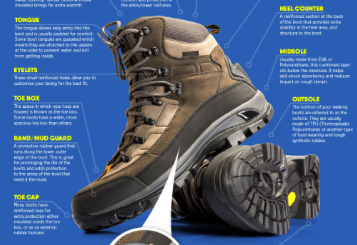Are you an avid hiker who loves exploring the great outdoors? If so, you probably know the importance of having a good pair of hiking boots. Hiking boots are essential for providing support, traction, and protection while you’re out on the trails. However, like any other piece of gear, hiking boots have a lifespan and will eventually wear out. But how do you know when it’s time to retire your trusty old hiking boots and invest in a new pair? In this blog post, we’ll discuss the signs that indicate your hiking boots are worn out and need to be replaced.
1. Sole Wear
One of the most obvious signs that your hiking boots are worn out is sole wear. The soles of your boots are responsible for providing traction and stability on various terrains. Over time, the treads on the soles will wear down, reducing their effectiveness. If you notice that the treads are worn smooth or have become uneven, it’s a clear indication that your boots have seen better days.
2. Lack of Support
Another sign that your hiking boots are worn out is a lack of support. As you wear your boots over time, the materials that provide support, such as the midsole and insole, can break down and lose their cushioning properties. If you start to feel more pressure on your feet or experience discomfort while hiking, it may be a sign that your boots are no longer providing the support you need.
3. Visible Damage
Inspect your hiking boots regularly for any visible signs of damage. This includes cracks, tears, or holes in the upper material of the boots. If you notice any of these issues, it’s a clear indication that your boots are no longer able to protect your feet from the elements. Damaged boots can also lead to blisters and other foot problems, so it’s essential to replace them if you spot any visible damage.
4. Water Resistance
Hiking boots are designed to keep your feet dry and protected from water while you’re out on the trails. If you find that your boots are no longer waterproof or are letting water seep through, it’s a sign that the materials have deteriorated and are no longer effective. Wet feet can lead to discomfort and even injury, so it’s crucial to replace your boots if they have lost their water resistance.

Credit: www.reddit.com
5. Uncomfortable Fit
Your hiking boots should fit snugly and comfortably to provide the support you need while hiking. If you notice that your boots have become too tight, too loose, or are causing discomfort in any way, it’s a sign that they are no longer suitable for hiking. An uncomfortable fit can lead to blisters, hot spots, and other foot issues, so it’s essential to replace your boots if they no longer fit properly.
Credit: www.quora.com
6. Odor and Mold
Do your hiking boots have a persistent odor that just won’t go away? This could be a sign that your boots have accumulated mold and bacteria from being worn repeatedly. Moldy boots not only smell unpleasant but can also be a health hazard. If you can’t get rid of the odor or notice signs of mold growth, it’s time to say goodbye to your old boots and invest in a new pair.
7. Age of the Boots
Even if your hiking boots show no visible signs of wear, it’s essential to consider the age of the boots. Most hiking boots have a lifespan of around 500 miles or 800 kilometers. If you’ve been using your boots for several years or have logged a significant amount of mileage, it’s a good idea to replace them, even if they still look relatively new. The materials in the boots can deteriorate over time, even if they are not used frequently.
Frequently Asked Questions
How Often Should Hiking Boots Be Replaced?
Hiking boots should be replaced every 500-1000 miles, depending on usage and terrain.
What Are Signs That Hiking Boots Are Worn Out?
Cracking soles, worn treads, decreased support, or visible damage indicate worn-out boots.
Can Worn-out Hiking Boots Cause Foot Problems?
Yes, worn-out boots can lead to blisters, foot fatigue, and even injuries due to lack of support.
Is It Possible To Repair Worn-out Hiking Boots?
Minor repairs like sole replacement or re-stitching may be possible, but extensive damage may require replacement.
Conclusion
Knowing when your hiking boots are worn out is essential for ensuring your safety and comfort while out on the trails. By keeping an eye out for signs of wear, lack of support, visible damage, water resistance issues, uncomfortable fit, odor and mold, and considering the age of your boots, you can determine when it’s time to retire your old boots and invest in a new pair. Remember that properly maintaining and replacing your hiking boots will help you enjoy your outdoor adventures to the fullest!




